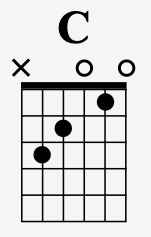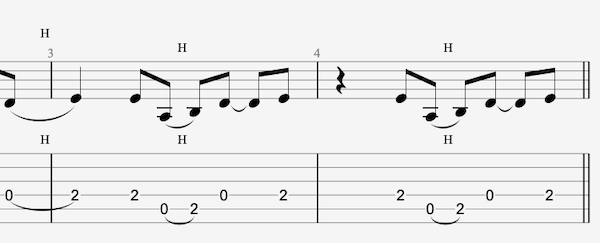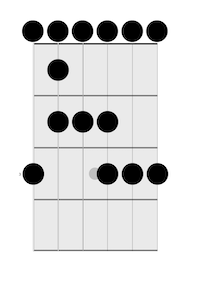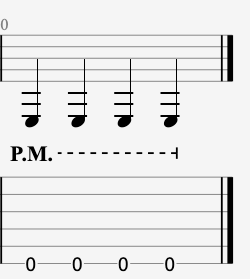Green River Guitar Lesson: Tips and Tricks for Blues Rock Players
If you're a fan of blues and rock guitar, then this “Green River” guitar lesson by Creedence Clearwater Revival (CCR) is perfect for leveling up your skills.
This song skillfully blends the two styles of music and adds a swampy feel for good measure.
I’m going to break it down for you step-by-step so when you're done you'll have an awesome version that will sound great for accompanying yourself, playing along with the recording, or even jamming with other people as well.
Who wrote Green River?
"Green River" was written by John Fogerty for the American rock band Creedence Clearwater Revival. It was first released as a single in July 1969, one month before the full Green River album was released.
The song was written about a vacation spot on Putah Creek, near Winters, California that Fogerty used to go to as a kid.
Green River Chords
You’ll only need to know 3 chords to play “Green River” and they are E7, C, and A.
You can play E7 in the open position like this:

C like this:

And finally, A like this:

How do you play the intro to Green River?
In this post, I’ll share with you two different ways of playing in this style. One is just playing the riff by itself, and then another one is where we’ll keep the thumb pedaling a steady bass note underneath. The first way is easier and it all begins with a classic double-stop lick that slides into the 4 fret on the 3rd string and the 3rd fret on the 2nd string like this:

This lick is used by countless blues players and is using just two notes B, and D the 5th and 7th of an E7 chord. The riff finishes with a slide down into the open position and a few more notes like this:

This style of playing is very similar to an older blues style played by Hubert Sumlin with Howlin’ Wolf. Check out tunes like Smokestack Lightnin’, or Suzie Q. for more examples of this as well.
These riffs come right out of the E minor blues scale and that scale can be played in the open position like this:

You could also think of the notes and frets like this as well:
6th string frets = 0, 3
5th string frets = 0, 1, 2
4th string frets = 0, 2
3rd string frets = 0, 2, 3
2nd string frets = 0, 3
1st string frets = 0, 3
That is level 1 with the riff, however, if you want to spice it up from here try adding in a steady bass note thumb. This way of playing requires quite a bit more independence of rhythm to pull off.
Now here I would recommend playing the riff fingerstyle as it’s easier if you are just getting started in this style.
Step 1 is to start to play the open low 6th string on a steady quarter-note pulse like this:

From there, you want to combine the riff on top while keeping the low bass going like this:

Tip: It’s a great idea to keep the bass notes palm-muted by placing your fingerpicking hand down on the strings and removing a little bit of the ring from the notes.
This helps keep the melody cutting through the mix on top and creates the sound of backing, and then a lead line. Think of it like a backing band and a lead singer. You don’t want to go to a concert and have the band drown out the lead singer. In the same way, your bass notes should not overpower the melody notes on top.
Putting it all together and playing with the song
Once you have the chord shapes under your fingers and the riff is starting to feel comfortable, next try putting them together in the progression of the song.
Start out by strumming 2 bars of E7 and then play the 2 bar riff like this:
E7 (2 bars)
Riff (2 bars)
Then that repeats and that is the first 8 bars from when Fogerty comes in singing.
Note how the guitar part here functions as a “call and response” from the vocal line. So the vocal sings for 2 bars of the E7 as the “call” and then the “response” is the guitar riff for the next 2 bars. Since the chord progression just stays for 4 bars on the E7 the riff functions as a nice variation and gives the basic chord changes of the song an energy lift.
Next, we’ll play 2 bars of E7 and then 2 bars of C like this:
E7 (2 bars)
C (2 bars)
Finally, we’ll wrap up the progression with 2 bars of A and then 2 bars back on the riff again.
A (2 bars)
Riff (2 bars)
Conclusion:
Learning how to play “Green River” on guitar is an excellent way to improve your rock and blues guitar skills. Throughout this post, I've shared essential steps that you need to take to learn how to get this classic under your fingers. These steps include getting the chords down, playing the signature riff, and even learning how to jam it out fingerstyle.
As I mentioned earlier, the chords in “Green River” are relatively straightforward, but it's the rhythm, riffs, and grooves that bring the song to life. With regular practice, you'll be able to play the song smoothly and confidently at higher levels.
“Green River” is a classic example of blending blues and rock music with a swampy feel, which is characteristic of CCR's unique sound. Playing the song can help you understand the nuances of these genres and even inspire you to create your music.
It's important to start slowly and gradually bring these techniques and riffs up to tempo over time. By following the steps I’ve outlined in this post, you'll be able to master “Green River” in no time. Remember to have fun, and for another great CCR lesson, check out “Run Through The Jungle” or “Suzie Q.” next!"
Like this blog post? Get Jon’s best guitar lessons straight to your inbox.
